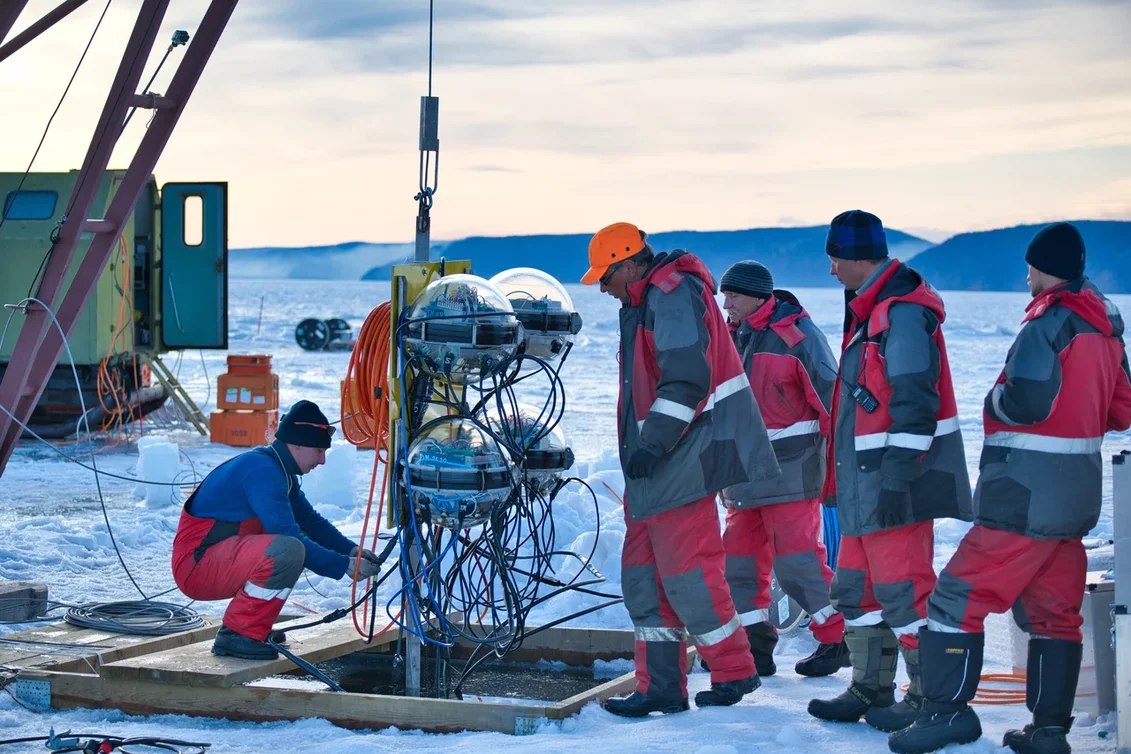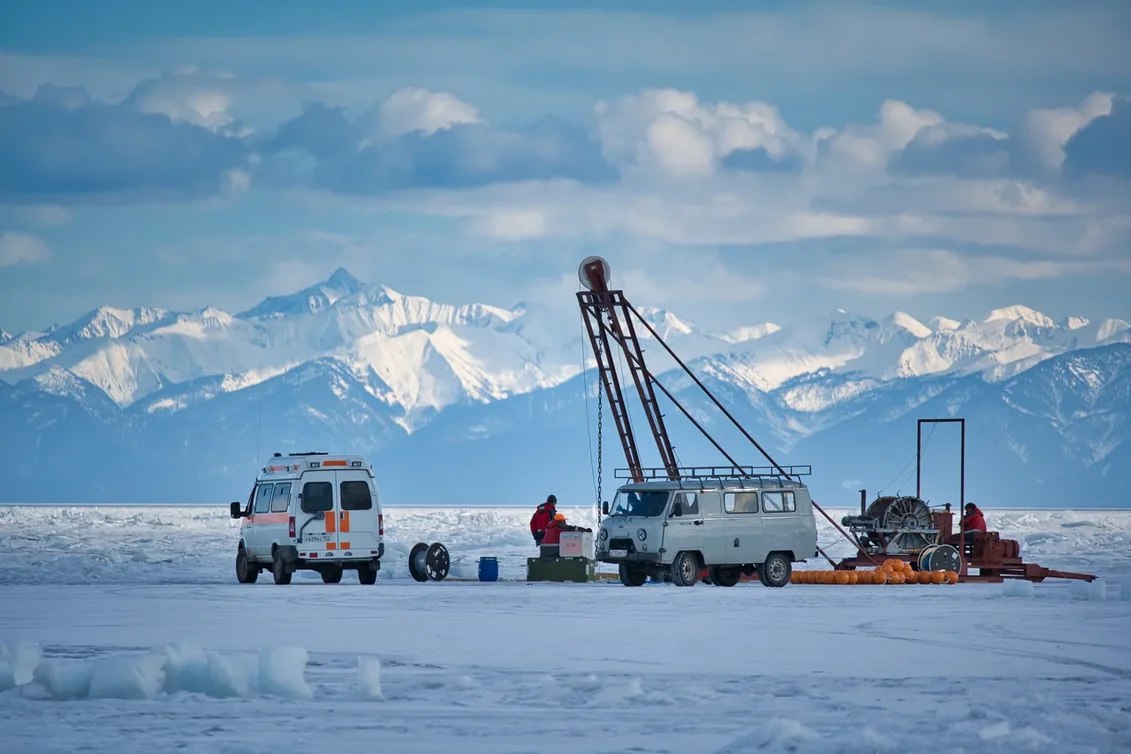
A New Milestone in the Construction of the Cubic Kilometer Baikal-GVD Deep Underwater Neutrino Telescope

From February 17 to April 10, two new clusters of optical modules were installed, the sixth and the seventh, at Baikal-GVD Deep Underwater Neutrino Telescope. The effective volume of the facility, corresponding to the detection of hadronic showers produced by neutrinos, reached 0.35 km3.

Credits: B. A. Shaybonov
The Baikal-GVD Neutrino Telescope is designed for detecting and studying high-energy neutrino fluxes from astrophysical sources. Scientists plan to explore the astrophysical processes with huge energy releases occurred at the time when the Universe was hundreds of millions or billions of years younger.
According to the project, the volume of the facility in Lake Baikal should be about one cubic kilometer. The installing of the two new clusters in 2020 was an important step towards this goal. The effective volume of the facility, corresponding to the detection of neutrino produced showers, reached ~ 0.35 cubic kilometer. The estimates, based on existing algorithms (which are constantly improving), suggest that the current setup should be able to detect 3-4 neutrino interactions per year with the neutrino energy exceeding 100 TeV.
The Baikal Neutrino Telescope, being still under construction, is a unique scientific facility, one of four pillars of the Global Neutrino Network (GNN), along with IceCube at the South Pole, KM3NeT and ANTARES in the Mediterranean Sea. They explore all together the Universe considering neutrinos as messengers.
The installation site of the Baikal Neutrino Telescope is 3.5 km away from the shore. The facility is assembled at the depth of 750-1300 m in the Southern Hollow of Lake Baikal from about one-meter-thick ice surface, what greatly simplifies the installation.

Credits: B. A. Shaybonov
This year, the expedition met hard times because of anomalous weather conditions. During the ice formation period, a strong wind broke the ice cover of the lake. Huge ice blocks and ridges grew all across the lake, which significantly impeded the mounting. Nothing like that was observed in the whole 40-year-long history of the Baikal expeditions. It was not clear whether the team would be able to cut the ice through all these ice ridges to lay the cables to the new facility.
Thanks to a great experience of the team, the appropriate solution was found and the two new clusters were installed. In addition to them, an experimental technological string with five calibration laser light sources and underwater fibre-optic cables for data exchange was mounted. At present, all devices are successfully taking data.

Credits: B. A. Shaybonov
In total, 60 researchers, engineers, technicians, workers, including volunteers, participated in the expedition. The 2020 expedition program has been fully completed.
This year, the International Scientific Baikal-GVD Collaboration comprises the Institute for Nuclear Research of RAS (Moscow), the Joint Institute for Nuclear Research (Dubna), Irkutsk State University, Nizhny Novgorod State Technical University, St. Petersburg State Marine Technical University, the Institute of Experimental and Applied Physics of Czech Technical University in Prague, the Faculty of Mathematics, Physics and Informatics of Comenius University in Bratislava (Slovakia), the Institute of Nuclear Physics of the Polish Academy of Sciences (Krakow, Poland), EvoLogics GmbH (Berlin, Germany).
The expedition was organized by the Institute for Nuclear Research of the Russian Academy of Sciences (Moscow) and the Joint Institute for Nuclear Research (Dubna).
G.V. Domogatsky, spokesman of the Baikal-GVD Collaboration
Further information:
- Baikal-GVD website: https://baikalgvd.jinr.ru/
- Report from deployment 2019: https://www.appec.org/news/baikal-gvd-neutrino-telescope-a-step-forward-construction-of-the-cubic-kilometer
- Baikal Expedition Chronicles: http://dlnp.jinr.ru/en/baikal-gvd/baikal-journals/bajkalskij-dnevnik-2020
Photo Credits: B. A. Shaybonov










